Say you want to put the charging station on your patio or next to the garage, but the instructions state that it should only be placed on the lawn. Is that really true, or can you actually put the charger somewhere other than on the lawn? I have taken a closer look at the topic and will explain everything to you here.
Can the charging station be placed outside the lawn? Depending on the situation and distance from the lawn, it is also possible to place the charging station outside the lawn. Usually the boundary wire must then be laid differently or a setting on the robotic mower must be changed slightly. However, many problems can arise if the distance to the lawn is too far.
In the following article I will explain to you in more detail what possibilities there are to place the charging station outside the lawn, what you need to pay attention to, and what problems might arise.
Contents
Why is it problematic to place the charging station outside the lawn?
Problems that can occur when placing the charging station directly next to the lawn
The first big problem is parking the robotic mower. Somehow the mower must find its way back to the charging station, using either the guide wire or the boundary wire. For parking, however, it uses the “proximity signal.”
This is a signal with a very short range of about 1 meter, which is transmitted by an antenna on the board of the charging station. When parking, the robotic mower will detect and orient itself to this signal. If the mower finds the charging station through the guide wire or boundary wire, it orients itself to the proximity signal and then tries to park in the charging station.
However, if the boundary wire is laid in front or even below the charging station, it can confuse the robotic mower when parking or even interfere with the signal.
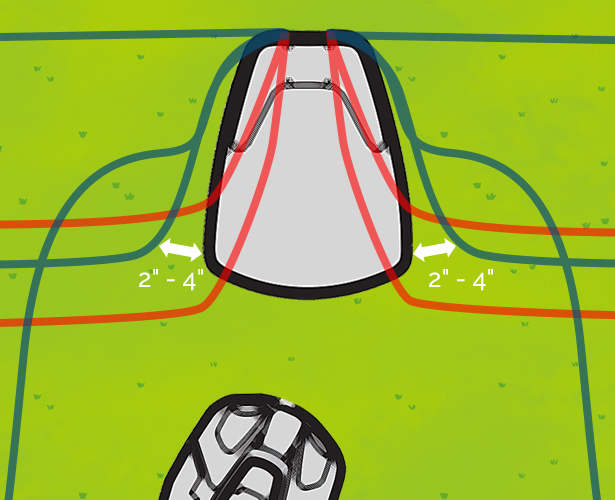
red = ways the cable cannot be laid
If the robot finds the charging station through the guide or boundary wire, it will orient itself by using the proximity signal and then attempt to park in the station.
However in this scenario, when parking, it will drive too close to the boundary wire and into its magnetic field, which then will cause it to reverse and start parking again. Or, it will no longer be able to perceive the signal from the charging station.
Normally, the boundary wire must run from the rear of the charging station at right angles, according to the instructions, for several meters to prevent this from happening. However, in this case with the charging station placed just outside the lawn, the mower would then drive where there is obviously no lawn to the left and right of the charging station.
By cleverly laying the boundary wire, however, you can still manage to get the robotic mower to drive into the charging station. I will show you how to do this in a moment.
Problems that can occur with charging stations that are connected via a corridor
If your charging station is not located directly at the edge of the lawn, but can only be reached from the lawn via a longer corridor, there are different problems that arise.
With such a layout it is possible that the robotic mower will drive into the narrow corridor while mowing. It cannot see that this is a corridor and will get easily tangled up and stay in the corridor for a long time to mow, because it constantly rebounds off the sides.
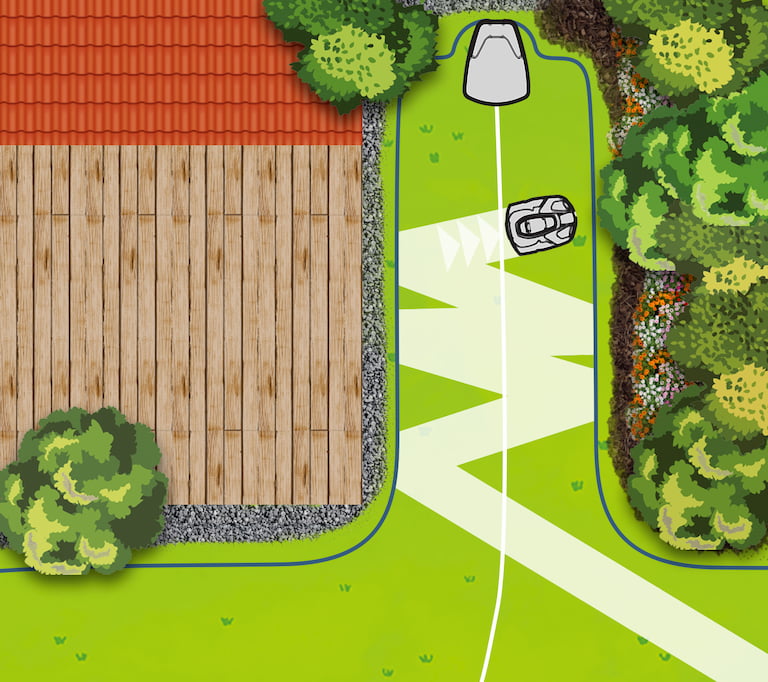
The lawn does not do well having the robotic mower mowing and driving around on the same spot for so long. Perhaps there is no grass in this corridor at all, but simply cobblestones. Then the mower will simply waste its time there.
So having a long corridor in front of the charging station can cause problems that, while not catastrophic, may not be acceptable for a perfectionist. Unfortunately, there is no patent solution to these problems.
You can try to remedy the situation by designing the entrance to the corridor in such a way that the probability of an accidental entry during mowing is as small as possible.
If your mowing robot supports remote start points, you can set a remote start point a bit before the corridor and set the mowing robot so that it always starts at the remote start point, which makes the exit easier.
How it can still work
Of course what works and what doesn’t always depends on the model. I would now like to present you with a few possible solutions for how you can lay the boundary wire so that the charging station can still be placed outside the lawn.
Solution A – Place the charging station behind the lawn’s edge
You can use this option if you want to place your charging station right next to the lawn, for example on the patio or in a flowerbed. In this case, it is important that the boundary wire runs away from the charging station at an angle on the front left and right, so you’re forming a sort of funnel into the charging station.
Make sure that the robotic mower cannot get stuck somewhere on the two sloping sides of the boundary wire, e.g. in the flower bed. You may have to lay additional lawn edging stones at the corners.
Another trick is to run the guide wire not directly towards the charging station from the front, but at a slight angle, so that when the mower approaches the charging station, it comes from the right. This makes sense because the robotic mower always moves slightly to the left of the guide wire.
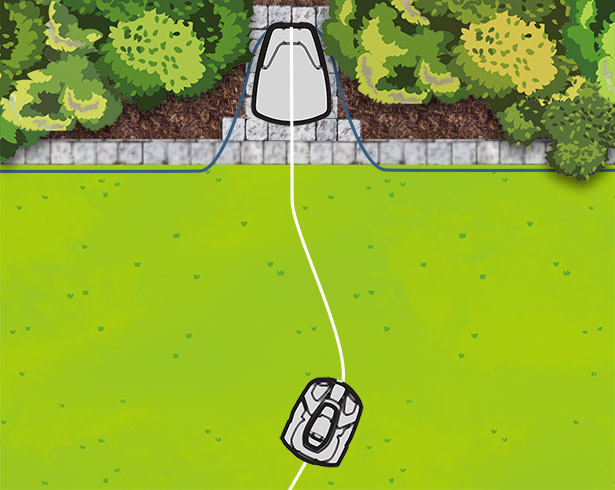
The mower will always slightly vary its distance from the guide wire so that it does not form a track along the guide wire. While it usually travels the guide wire staying on the left side, it will move towards the center when it comes close to the charging station.
Regardless of the distance between the robot’s current track and the guide wire, this design means that it comes to a halt at an angle in front of the charging station, turns to the right, and parks without any problems.
In this video you can see this layout solution in practice:
Solution B – Place the charging station behind the lawn’s edge for side entry
Some robotic mowers do not enter the charging station from the front, but from the side. They drive in from one side and drive out through the other side. Some Worx models function this way. If you have such a model, longer corridors are unfortunately not very feasible, but you can position the charging station right next to the lawn.
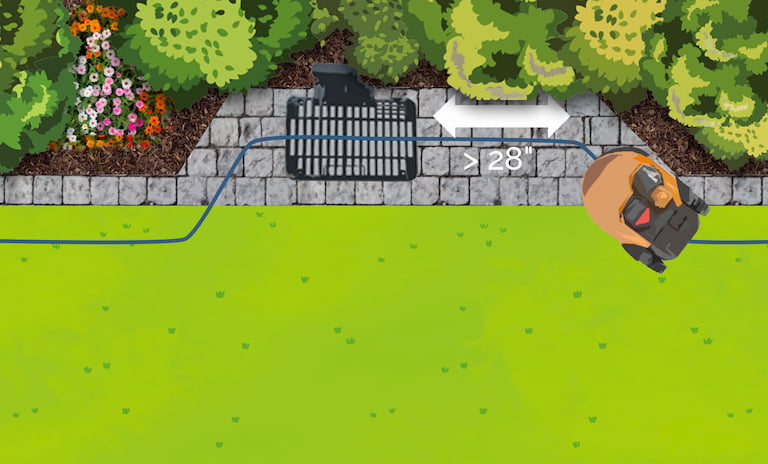
The robotic mower enters the charging station along the boundary wire. You must ensure that the boundary wire runs in a straight line for approx. 30 inches (sometimes 20 inches is sufficient) before it reaches the charging station on the entry side. On slopes, this distance might need to be up to 1 meter.
On the exit side, you can bend the cable at an angle of 45° quite soon after the charging station. When the mowing robot starts, it will make a sharp bend to the left after the exit to begin working.
Solution C – place the charging station at the end of a long corridor
Longer corridors can also be used, but only with mowers that enter the charging station from the front. Sideways-entering mowers, like some Worx models, have difficulties with such a corridor, if the charging station is at the end of it.
When you build the corridor, you must ensure that you observe the minimum distances for your mowing model. For example, Automowers usually fit through a corridor whose width is at least 32 inches, but for many other models the width must be at least 1 meter.
In addition, the guide wire must always be far enough away from the boundary wire. Since robotic mowers do not always drive exactly above the guide wire, but sometimes along a corridor, the necessary distances between the guide wire and boundary wire are therefore sometimes different on each side. Refer to the manual for your model.
Once at the charging station, the boundary wire can then bend inwards towards the station. However, it should not do this too soon, but only towards the middle of the charging station. Take a good look at the graphic below.
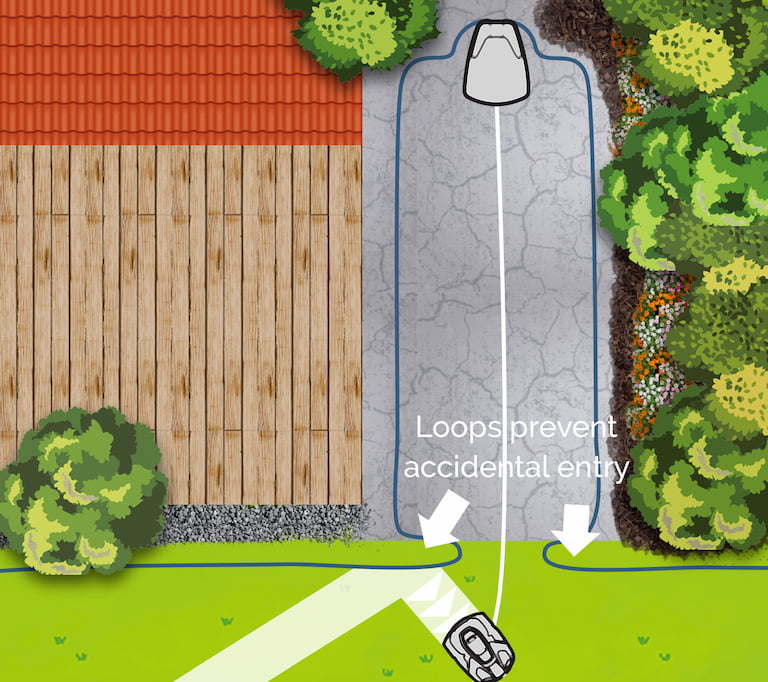
If grass grows in the corridor, the mower can potentially stay there too long and put a lot of strain on the lawn. You can try to minimize the risk of the mowing robot entering the corridor by cleverly laying the boundary wire at the entrance to the corridor.
With the two loops at the entrance, you can greatly reduce the probability of the robotic mower accidentally entering the corridor in mowing mode. Only when driving directly straight towards the entrance will it get through the two loops.
These setting options on the robotic mower can also help you
- Guide wire corridor width: Experiment with the guide wire corridor width. If your robotic mower still has problems driving into the charging station, changing the value can sometimes work wonders.
- Avoid collision with the charging station: Some robotic mowers have a function, where, in mowing mode, they use the radio signal from the charging station to detect when they are close by, and subsequently try to avoid getting too close to it. Activate this function if there are problems with charging station collisions.
- Finding the charging station: If you have a mowing robot with a guide wire, you can set the time at which it should start to search for the charging station in search mode using either the guide wire or the boundary wire. Set this time to 0 for the guide wire and as high as possible for the boundary wire.
- Reverse drive distance: With some models, you can set a reverse drive distance. This determines how far the robotic mower must drive out of the charging station before it starts mowing. This is useful for charging stations in narrow corridors.
Related questions
Can the charging station be placed on an island? With some robotic mowers, the charging station can also be placed on an isolated island. However, this should only be done in exceptional cases. In this case the guide wire must end at the island.
Where should the charging station be placed? The ideal location for the charging station will have no gradient in the immediate vicinity, and not be in a corner; it will be in the shade, and will be as centrally located as possible while being close to a power outlet. Ideally, the charging station should also be located on the lawn.
I have a long corridor in front of the charging station and the calibration drive stops. What can I do? The robotic mower makes a calibration drive before it begins mowing. It carries this out directly in front of the charging station and needs some space for this. If there is not enough space in your corridor, you can move the charging station far enough forward that there is enough room for the calibration drive. After the calibration drive you can move it back again.

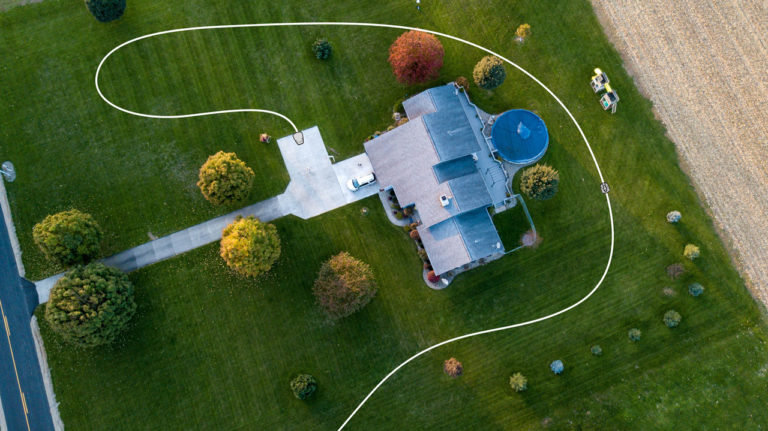
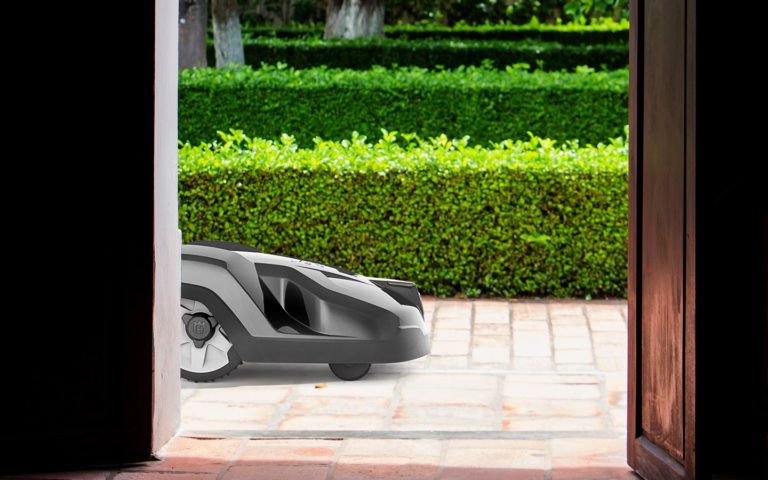


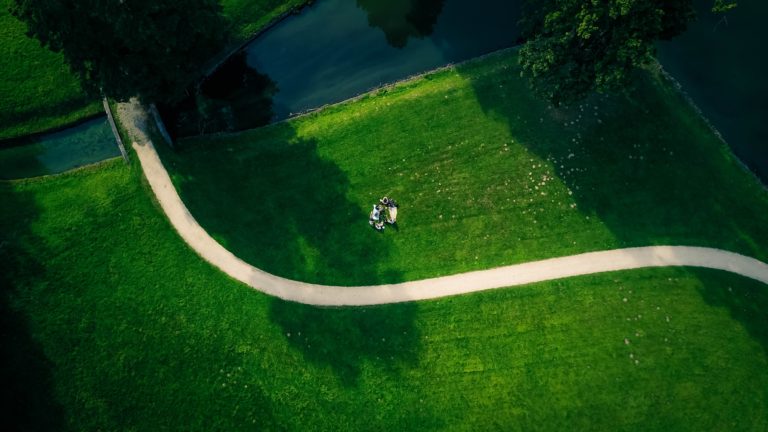
Can the charging station go under the deck
115H model
This is a really great post as I myself have placed my charging station off the lawn. I have found that where my charging station is placed (against the side wall of a garage), the boundary wire is against the wall and the mower is constantly trying to dock by bumping and scraping itself against said wall. I will now lay the boundary wire as shown above and it should prevent further scratches. Many thanks and keep up the great work.